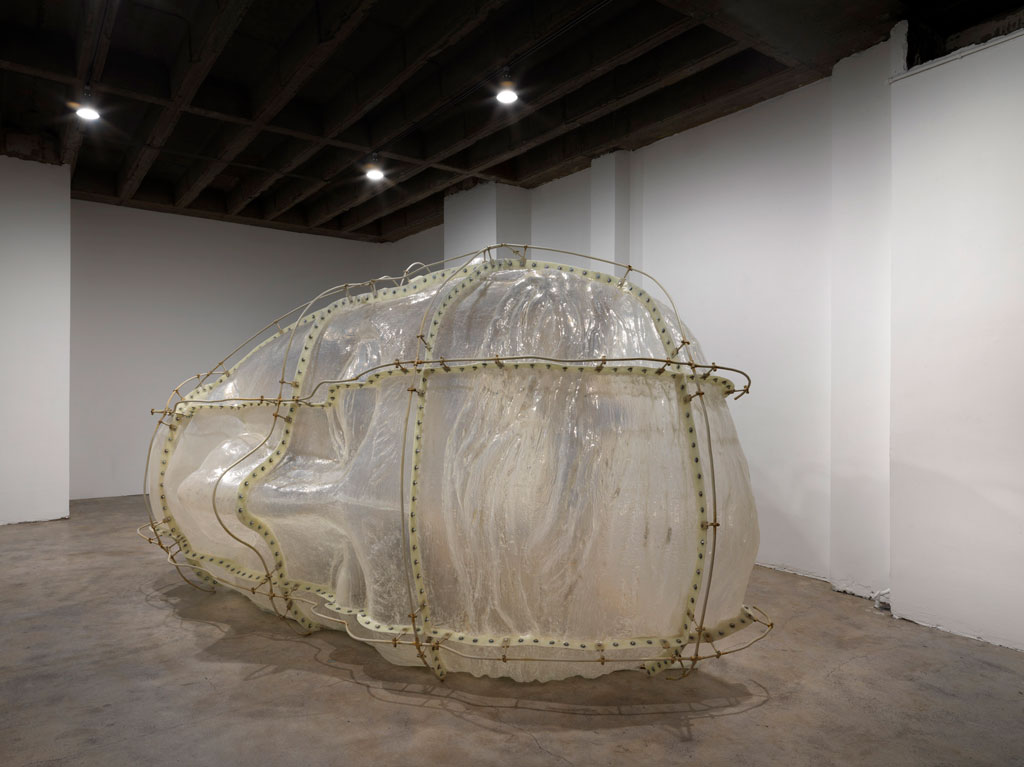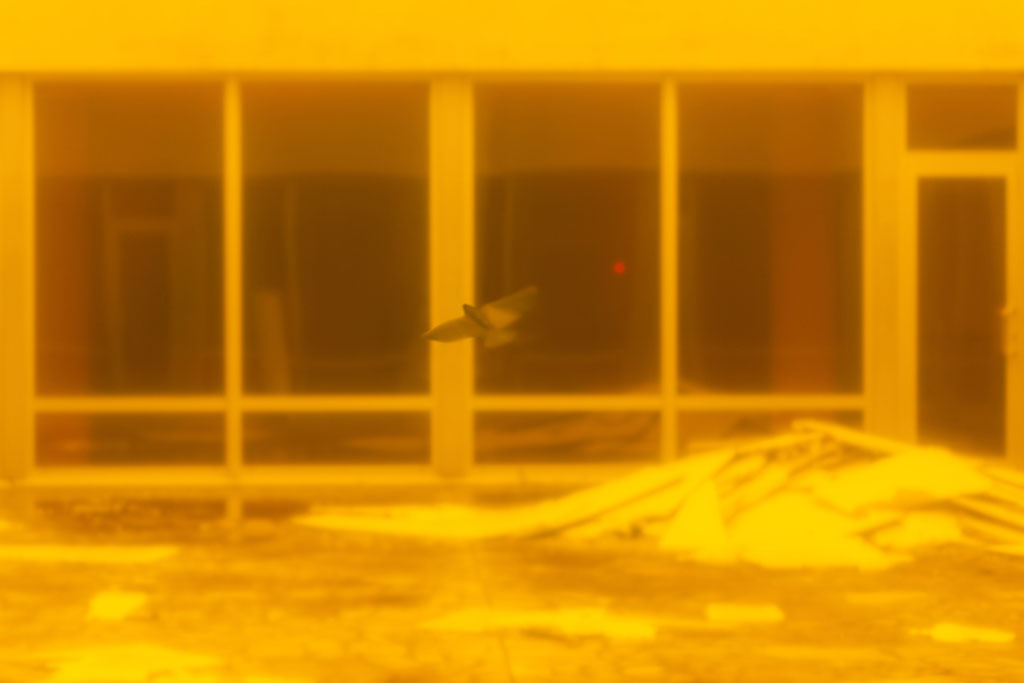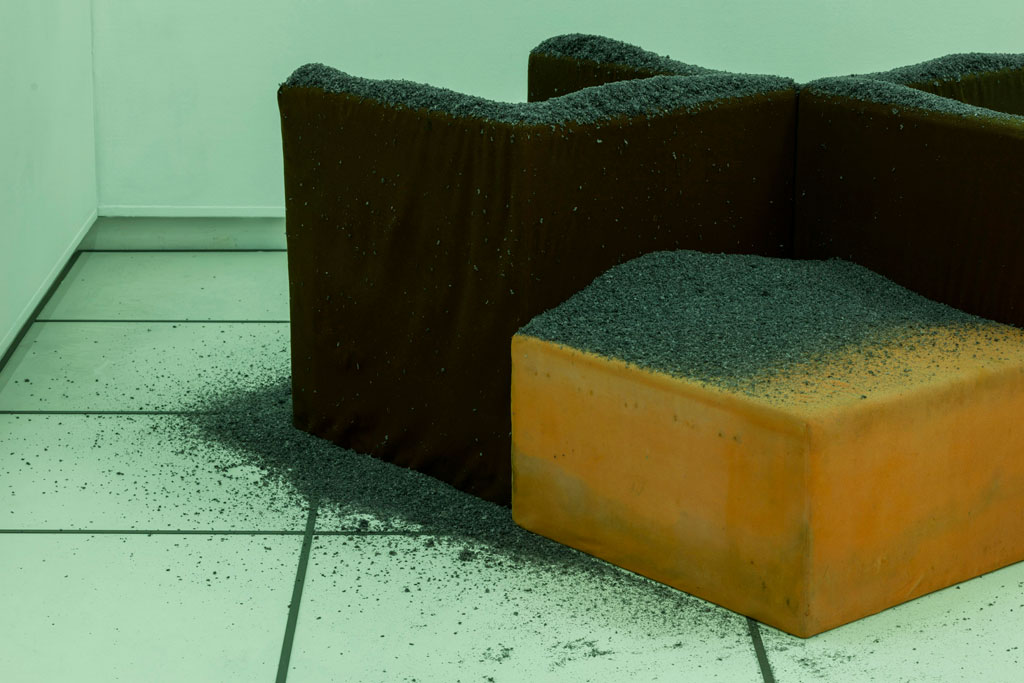ART-PREVIEW:Dora Budor-I am Gong
Dora Budor creates installations, environments, and sculptures, that recall moments of cinematic experience via their atmospheric scenographies. She explores histories of cinema and architecture, in order to merge concepts of reality and fiction in new ecosystems. Her works often contain used movie props, special effects, and historical remnants of utopian architecture. Budor places the history of the found object into a new narrative, evoking an uncanny form of memory and emotional connection in the viewer.
By Dimitris Lempesis
Photo: Kunsthalle Basel Archive
For “I am Gong”, her first institutional solo exhibition in Europe, Dora Budor investigates the architectural history of Kunsthalle Basel and its surroundings in order to use sound, dust, and environmental data from dissonant temporalities to create an evolving “score” for her exhibition. Inspired in equal measure by science fiction, cinematic staging, and the overwhelming hybridization of nature with the human-made, the Croatian-born artist turns the exhibition into a reactive machine. The result is a disquieting exhibition experience, with artworks whose unfolding forms are modulated by invisible forces. Budor was born in Zagreb in Croatia and lived there whilst she completed a BA in Architecture Studies (2003-05) and received an MFA in Design from the Faculty of Architecture, University of Zagreb (2003-08). She also studied Visual Art (New Genres) at the MFA Program of Columbia University School of The Arts, New York, in 2012. In “Year Without A Summer (Panton’s Diversion)” Budor combined rare readymade Verner Panton modules designed in the 1960s with falling ash that slowly covered the modules. The fall of the ash was triggered by a technology that registers the sounds of visitors in the space. The work had been created for the exhibition. Her “Adaptation of an Instrument” is a dynamic environment that reacts to the frequency and excitation of the moving bodies inside of it, weaving together film ecologies with dynamic physiological responses. The Instrument simultaneously acts as a scientific device utilized to measure and diagnose, but also as a system created to produce sensory phenomena occurring between the architectural structure, program and event – your body being the “event”. It can also be considered an organism of sorts, in which the intruding body resuscitates the biosphere of cinema, continuously adjusting itself to the new impulses. It does what a living body does; it gets excited, it reacts back, it flickers and breaks down when its excitation levels reach the maximum, or dies out when the movement inside of it stops. Budor’s installation, “The Preserving Machine” (2018), commissioned by Baltic Triennial 13, borrows its title from Philip K Dick’s classic science fiction short story “The Preserving Machine” (1953), the interior of the Contemporary Art Centre (CAC), became both a viewing and preserving mechanism for the inaccessible open courtyard situated in the core of the gallery. A layer of film dust, made out of diatomaceous earth, is dispersed throughout the courtyard; a ‘Midas touch’ in reverse, it contaminates, instantly ageing and provoking a perceived redundancy of any object covered. Seen through the reddish-orange color cast by the filters placed on the architecture’s windows, the courtyard became a ruinous landscape of the past.
Info: Kunsthalle Basel, Steinenberg 7, Basel, Duration 24/5-11/8/19, Days & Hours: Tue-Wed & Fri 11:00-18:00, Thu 11:0020:30, St-Sun 11:00-17:00, www.kunsthallebasel.ch



